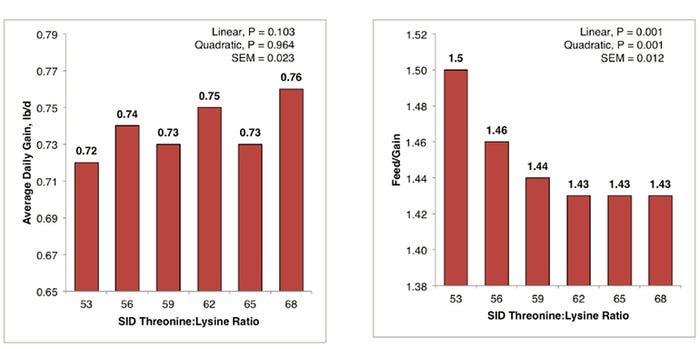The threonine-to-lysine ratio is crucial to optimize the growth performance of nursery pigs. To balance performance and cost it is important to use the right level of threonine.
October 25, 2017

PIC and Pipestone Applied Research have conducted a study to evaluate the optimum threonine:lysine in nursery diets. The threonine-to-lysine ratio is crucial to optimize the growth performance of nursery pigs.
To balance performance and cost it is important to use the right level of threonine. The intent of sharing these results is to provide nutritionists in commercial production systems with further data to optimize the total profitability in the farm.
The study
PIC North America and Pipestone Applied Research have done a recent study determining the ratio of standardized ileal digestible threonine:lysine that maximizes nursery pig performance under commercial conditions.
• A total of 2,262 pigs at a starting weight of 12.5 pounds underwent six feed treatments in a 39-day growth trial.
• Lysine was kept below the industry standard to ensure that the threonine:lysine ratio was not underestimated.
• For the economic calculations, a cost of $1.34 per pound threonine was assumed.
Results
Overall, average daily gain was maximized at >68% SID threonine:lysine and feed to gain was minimized at 65% SID threonine:lysine (Figures 1 and 2 below).

For nurseries managed on a fixed time basis, profitability was maximized at 68% threonine:lysine. More specifically, these results indicate that compared to 59% threonine:lysine ratio, 65% provides a $1.17 per pig benefit from zero to 21 days and $0.15 per pig benefit from 21 to 39 days (Table 1).

For nurseries managed on fixed weight, a ratio of 68% SID threonine:lysine maximized profit from zero to 21 days and 62% maximized profit from 21 to 39 days.
Note that the optimal ratio of SID threonine:lysine depends on the ingredient prices available to you.
Source: PIC
You May Also Like



